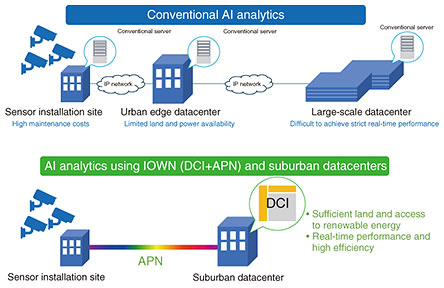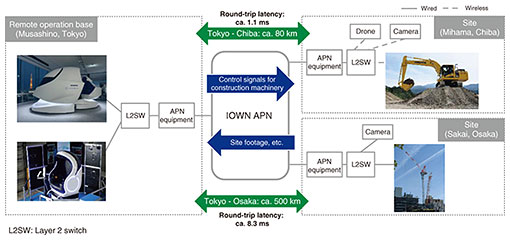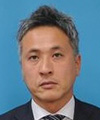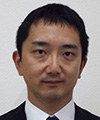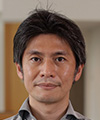 |
|||||
|
|
|||||
|
Feature Articles: Frontlines of IOWN Development—Development of IOWN Hardware and Software and Social Implementation Activities Vol. 23, No. 7, pp. 13–19, July 2025. https://doi.org/10.53829/ntr202507fa1 Development and Demonstration of Use Cases for Social Implementation of IOWNAbstractThis article introduces the initiatives of NTT IOWN Product Design Center, which is promoting the development and demonstration of use cases leveraging Innovative Optical and Wireless Network (IOWN) technologies, with the goal of accelerating the implementation of the IOWN concept. Keywords: IOWN, use case, demonstration 1. IntroductionThe IOWN Product Design Center (IDC) was established in May 2022 as the fourth organization within NTT IOWN Integrated Innovation Center (IIC), with the mission of accelerating the adoption and deployment of Innovative Optical and Wireless Network (IOWN) technologies. Working in close collaboration with other IIC organizations—including the Network Innovation Center, which leads research and development (R&D) for network and access systems; Software Innovation Center, responsible for computing infrastructure software development; and Device Innovation Center, which focuses on R&D of optical and electronic devices—IDC actively engages in identifying social needs and translating the IOWN concept into timely, social implementation. IDC is specifically advancing the commercialization and productization of IOWN technologies across several domains: the information and communication technology (ICT) solutions business and communications network business to deliver enhanced value through IOWN, and the information technology (IT) equipment and terminals business to improve performance and power efficiency, particularly through initiatives centered on photonics-electronics convergence technologies [1]. The following sections present the latest development trends across these domains, highlighting recent proof of concept (PoC) initiatives and demonstrations aimed at social implementation of IOWN technologies. 2. Initiatives in the IT equipment and terminals business domainThis section highlights a use case for data-centric infrastructure (DCI), a next-generation computing platform under development to support the IOWN concept. In conventional computing platforms, a significant amount of central processing unit (CPU) processing is required to manage components such as graphics processing units (GPUs), leading to high power consumption. Due to latency issues, it has been difficult to use GPUs located at remote sites. Although edge datacenters are increasingly being used for real-time processing, challenges, such as securing land for construction and ensuring sufficient power supply, remain. DCI addresses these challenges by incorporating NTT’s strengths in photonic communication technologies to develop more efficient ways of using accelerators such as GPUs. One example under consideration involves integrating DCI with the All-Photonics Network (APN) to enable artificial intelligence (AI)-based analytics in remotely located, suburban datacenters (Fig. 1). These facilities can take advantage of ample land and access to renewable energy while still meeting the real-time demands of modern applications—paving the way for a sustainable, high-performance computing infrastructure.
At the IOWN Global Forum, in which NTT is an active participant, discussions and PoC efforts are underway to explore such use cases combining DCI elemental technologies with the APN. One reported case demonstrates that power consumption for decoding video from numerous cameras, executing preprocessing, and executing AI inference tasks can be reduced by up to approximately 60% [2]. We will continue R&D efforts aimed at expanding DCI’s applications beyond video analysis to include platforms for large-scale data processing such as generative AI. At the time of publication of this issue, DCI is being used as the information-processing infrastructure for the NTT Pavilion at the Expo 2025 Osaka, Kansai, Japan. Completion of R&D for the commercial version, DCI-2, is scheduled for the end of the second quarter of FY2026. With the subsequent development of DCI-3, DCI is expected to evolve into a truly revolutionary computing infrastructure. 3. Initiatives in the communications network business domainIn this domain, we are advancing validation trials aimed at delivering greater value by leveraging the IOWN APN to address challenges faced by each industry. We are also working on demonstrations to improve network efficiency and reduce power consumption by applying the IOWN APN to meet rapidly growing traffic demand. 3.1 Remote production in the broadcast industryCompetition in the video content industry has intensified with the entry of Internet-based media. In response, practical implementation of video-production digital transformation (DX) is underway—connecting diverse filming locations and production bases via the APN, which enables high-capacity, low-latency, and jitter-free transmission to support high-quality content creation. At the NTT R&D Forum 2024 held in November 2024, we conducted a live demonstration of remote video switching and audio mixing for a live information program being filmed at a studio of Tokyo Broadcasting System (TBS) Television in Akasaka, all controlled remotely from the NTT Musashino R&D Center. As a further step toward establishing widespread use of the APN, we also carried out a remote audio production trial during the live broadcast of the Japan Record Awards aired by TBS Television on December 30, 2024. Producing large-scale music programs usually requires extensive on-site mixing equipment and staff, posing challenges in cost reduction and securing an environment for high-quality content creation. In this trial, PTP (Precision Time Protocol) signals were transparently transmitted over the network to continuously synchronize devices across locations. Audio production was successfully executed remotely with less than 5-ms round-trip latency, enabling approximately half of the sound sources to be mixed remotely from a sub-control room inside the TBS Broadcast Center in Akasaka (Fig. 2). We plan to explore and verify the feasibility of fully remote production for sporting events and other large-scale broadcasts.
3.2 Remote heavy-machinery operationTo address issues faced by the construction industry—such as labor shortages, aging of engineers, and long working hours—there is a growing need to improve working conditions and operational efficiency through remote-controlled machinery. Achieving this, however, requires the remote operation of heavy equipment to closely replicate sight, hearing, and touch in the on-site operation. To this end, we are promoting the practical use of the APN across a wide range of scenarios. At the NTT R&D Forum 2023 held in November 2023, we conducted a demonstration titled APN for Remote Control and Grasp of the On-site Environment. Two remote-control cockpits were set up at the NTT Musashino R&D Center, from which operators remotely controlled a hydraulic excavator located approximately 80 km away in Chiba City, Chiba Prefecture, and a tower crane located about 500 km away in Sakai City, Osaka Prefecture (Fig. 3). Thanks to the low latency and jitter-free characteristics of the APN, the transmission delay between Tokyo and Osaka was reduced from several tens of milliseconds—typical of conventional fourth-generation mobile communications system (4G) connections—to just a few milliseconds. Buffering times for adjusting delay and fluctuation in video transmission equipment were also minimized. Therefore, the remote operation experience closely matched that of on-site operation, achieving highly realistic control responsiveness. Currently, in addition to accumulating expertise through these remote heavy-machinery-operation trials via the APN, further enhancements are being considered to meet more advanced needs from construction sites. These include diversifying last-mile wireless connections for greater flexibility and sharing tactile and auditory information to enrich the operator experience. We are also considering applying this expertise to remote operation of gantry cranes at ports, where centralized operation and a shortage of skilled operators present similar challenges (Fig. 4).
3.3 Remote operation of manufacturing and logistics facilitiesIn addition to demonstrations of remote heavy-machinery operations in the construction industry, we are also advancing proposals and PoC trials for applying the APN to the manufacturing sector. This industry faces challenges, such as labor shortages, the need for improved working environments, and the need for consolidating multiple factories and enabling remote operations. We are therefore exploring platforms that consolidate various factory-control-system software in the cloud and connect them via the APN, enabling real-time maintenance at centralized operation hubs, as well as integrated data collection and analysis across factory sites. For example, use cases such as remote operation and maintenance of industrial and transport robots and real-time quality inspection of products produced in factories, are considered, and we are preparing customer proposals and demonstration environments. 3.4 Initiatives in the medical fieldWe are also advancing initiatives in the medical field. Endoscopes currently rely on software within the device to conduct image processing such as identifying lesions. As image processing functionality becomes increasingly sophisticated, limitations in hardware performance and maintainability—particularly around software updates—are expected to become pressing issues. To address these challenges, we conducted the world’s first PoC in partnership with Olympus Corporation to demonstrate the cloudification of an endoscope system, where software and hardware are decoupled and computationally intensive image processing is partially offloaded to the cloud. In this joint PoC, we established a cloud-based endoscope system by connecting an endoscope and image processing server located approximately 150 km apart via NTT’s IOWN APN experimental network. The endoscopic images, captured by the endoscope operator, were transmitted in uncompressed format to the image processing server. There, AI-based processing and compression were carried out before the processed images were sent to a monitor for the practitioner to view. The PoC confirmed that the APN delay over 150 km was only 1.1 ms, demonstrating that real-time image transmission and processing are feasible for endoscopic surgery applications. This suggests that the application of the low-latency and low-jitter characteristics of the APN can also be extended beyond cloud-based endoscopy to other real-time image processing systems that require software-hardware separation. 3.5 Initiatives for infrastructure advancementIn addition to service applications, we are also exploring the APN for use in enhancing infrastructure. With the widespread adoption of 5G, mobile traffic continues to increase, leading to higher power consumption at base stations and communication facilities. Power efficiency has therefore become a critical issue for mobile carriers and vendors. By applying the APN to the mobile fronthaul, which is the interface between the distributed unit (DU) and radio unit (RU), it becomes possible to shift from a conventional one-to-one, physically fixed connection between the RU and DU to a dynamic configuration where the DU connected to a given RU can be switched flexibly. When mobile traffic is high, all DU sites can be operated; when traffic subsides, RUs can be redirected to alternative DU sites, enabling other DU sites to be consolidated or shut down while maintaining service continuity. This enables not only communication equipment but entire DU sites, including air conditioning systems, to reduce power consumption. This dynamic path switching makes it possible to rapidly reroute traffic to operational DU sites in the event of a fault between an RU and DU. This enables service continuity in the RU’s coverage area, enhancing network reliability. We conducted an experiment to explore an optimized procedure that combines RU reassignment with APN path switching to minimize the impact on communications during dynamic path switching and verified that dynamic path switching can be successfully executed using this procedure. The test setup included two mobile fronthaul sites 30 km apart connected via the APN, with live user traffic flowing through the system. Changes to the virtualized DU device’s RU configuration and optical-path-switching settings on the APN device were carried out, and the time required for dynamic path switching, as well as its impact on communication quality before and after switching, were verified. The results indicate that dynamic path switching could be completed within 8 min over a 30-km transmission distance, with no degradation in communication quality, such as data transfer speed or packet loss rate, after switching. While user traffic on the switched path was temporarily interrupted, other paths remained unaffected. Approximately 20% power saving was also achieved by consolidating operation following the switch. This experiment successfully demonstrated the feasibility of dynamic path switching using the APN in a mobile fronthaul environment. It showed that dynamic DU site operation in response to traffic fluctuations or faults is possible, leading to both reduced power consumption and improved service continuity. We aim to simulate actual base-station configurations, user numbers, and traffic volumes and incorporate automatic path-switching logic on the basis of traffic forecasts. Further efforts will focus on reducing switching time to minimize service impact, with the ultimate goal of implementing a more power-efficient and resilient network through dynamic path control with the APN. 4. ICT solutions business domainIn this domain, the goal is to enhance and increase the flexibility of services through IOWN, creating new value and reinforcing competitiveness of existing businesses. As part of these efforts, demonstration trials have been conducted for data replication using the international APN and flexible resource utilization across distributed datacenters. 4.1 Data replication using the international APNData replication is a type of backup strategy where data are constantly duplicated and maintained. By synchronizing data between a primary storage system and one or more secondary storage systems, services can be quickly restored in the event of a primary system failure by using data in the secondary storage system, thus improving business continuity. There have been distance limitations between primary and secondary storage systems, making remote operations challenging. However, leveraging the APN makes long-distance data replication feasible. In this demonstration, a roughly 3000-km APN connection laid between Taiwan and Japan was used to replicate data using test file sets designed for manufacturing and financial industry use cases (Fig. 5). Thanks to the low-latency and lossless characteristics of the APN, the replication time for 40 GB of data—previously over 14 min using conventional Internet Protocol (IP) networks (via the Internet)—was reduced to approximately 50 s.
4.2 Flexible resource utilization across distributed datacentersA distributed datacenter refers to an operational model in which multiple geographically dispersed datacenters are interconnected via the APN, functioning as a single virtual datacenter. In this initiative, we are exploring resource-utilization flexibility within a server virtualization environment built across distributed datacenters. We specifically aim to dynamically reallocate application processing on the basis of the status of resources such as power consumption and server load. The objective is to achieve autonomous control of this flexible resource utilization by integrating several elements: a management function or collecting various resource data; orchestration function for centralized system control and execution; and intelligent function, which automates decision-making processes. This intelligent function incorporates energy-aware coordinated ICT resource control currently under development by NTT Network Service Systems Laboratories (Fig. 6). As power consumption in datacenters continues to rise in response to increasing demand for AI, future ICT solutions must take both ICT systems and power systems into account. Flexible resource utilization across distributed datacenters is expected to become a promising and sustainable operational approach for next-generation service infrastructures.
Through these demonstrations, NTT laboratories are proposing use cases that ease the geographical constraints of traditional datacenters while also working with demonstration partners to explore future commercialization opportunities. References
|
|||||

